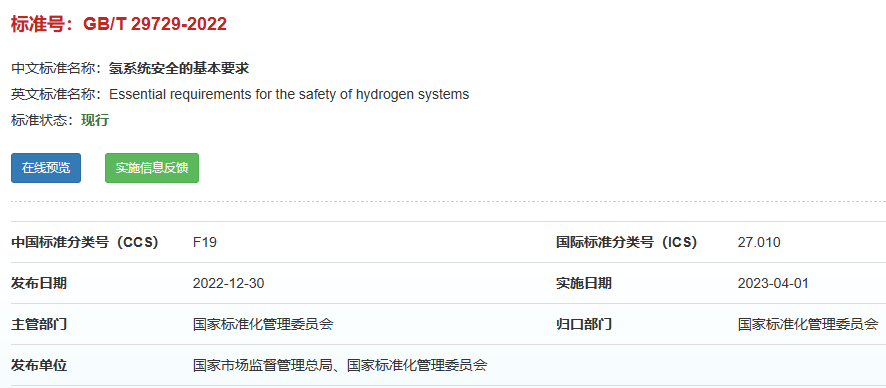The safe use of hydrogen as a fuel is a primary Hydrogen ZJU goal as it seeks to facilitate the rapid emergence of these hydrogen technologies. A key element in the safe use of hydrogen is to understand its unique safety-related properties and related phenomena, and that there are acceptable engineering approaches to controlling the hazards and risks associated with the use of hydrogen. In recent years, the development of hydrogen energy has been rapid, and it calls for an update of the requirements for the safety of hydrogen systems.
On December 30 2023, the Standardization Administration of China and the State Administration for Market Regulation published the national standard GB/T 29729-2022, "Essential requirements for the safety of hydrogen systems," which is mainly drafted by Zhejiang University, China National Institute of Standardization, Beijing Hydrosys Technology Co., Ltd., Foshan Green Development Innovation Research Institute, et al. The main drafters include Jinyang Zheng, Yanmei Yang, Wulin Han, Juan Shang, et al. This second edition cancels and replaces the first edition (GB/T 29729-2013), which has been technically revised and will be implemented on April 1 2023.
This standard provides guidelines for the use of hydrogen in its gaseous and liquid forms as well as its storage in either of these or other forms (hydrides). It identifies the basic safety concerns, hazards, and risks, and describes the properties of hydrogen that are relevant to safety. It describes the hazards associated with the use and presence of hydrogen, discusses the properties of hydrogen relevant to safety, and provides a general discussion of approaches taken to mitigate hydrogen hazards. In addition, it provides four informative annexes, including typical hydrogen production systems, hydrogen properties, and hydrogen materials (metallic, non-metallic, and plastics) data.
The aim of this standard is to promote the acceptance of hydrogen technologies by providing key information to regulators and by educating people involved with hydrogen safety issues. Compared to the first edition, the considerations presented in this version are broader, and general, and attempt to address most aspects of hydrogen safety. Adherence to the principles presented in this Technical Report can lead to a continuation of the safe and sustainable use of hydrogen.

Author: Shang, Juan
Updated: November 2023